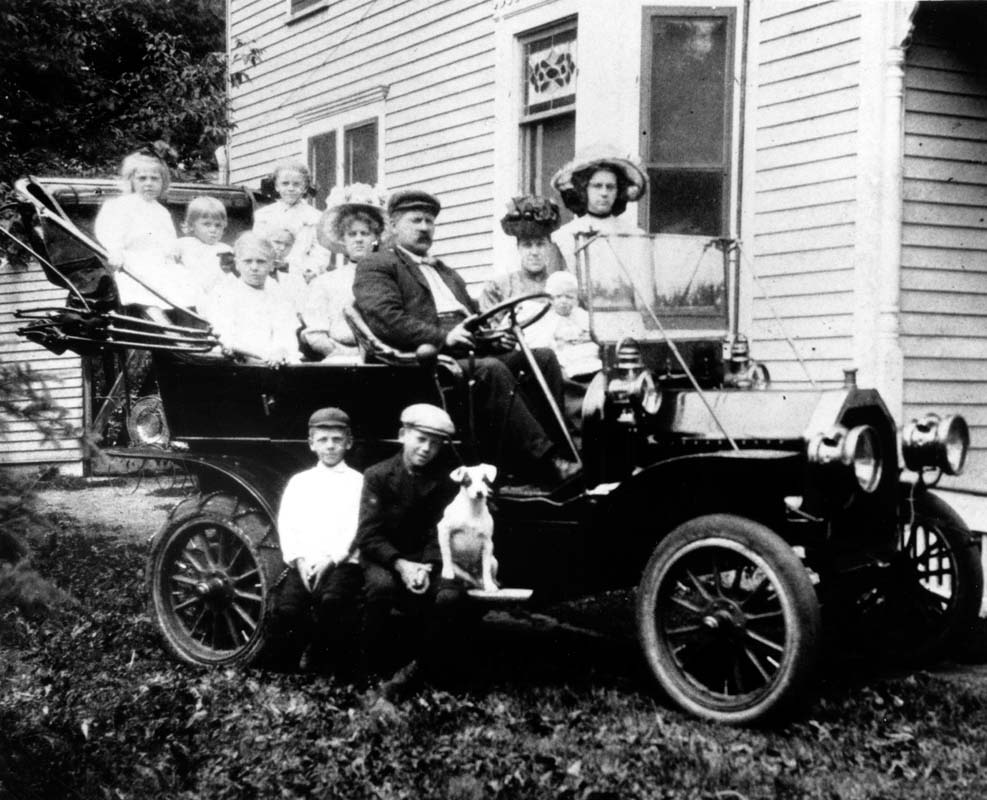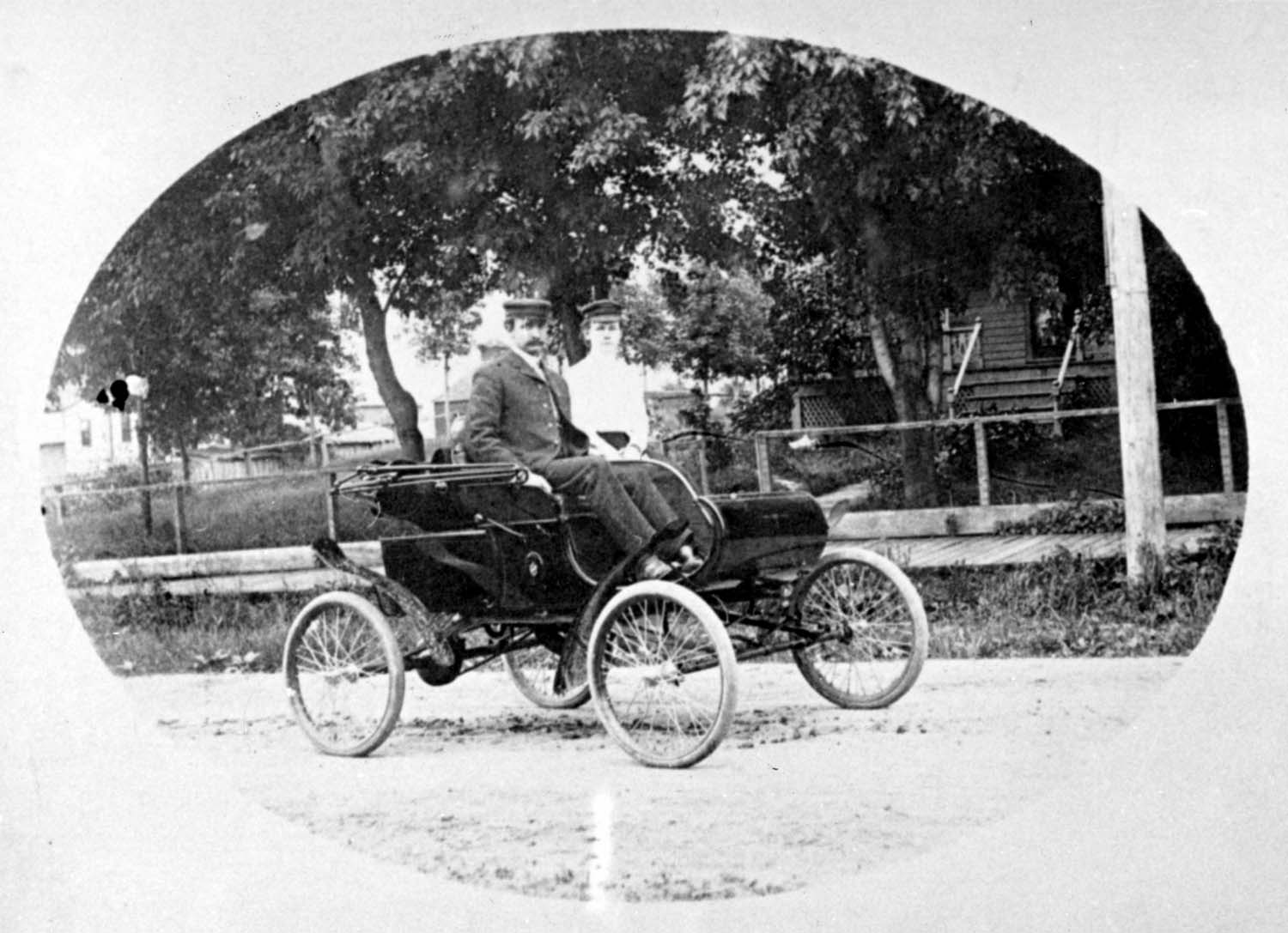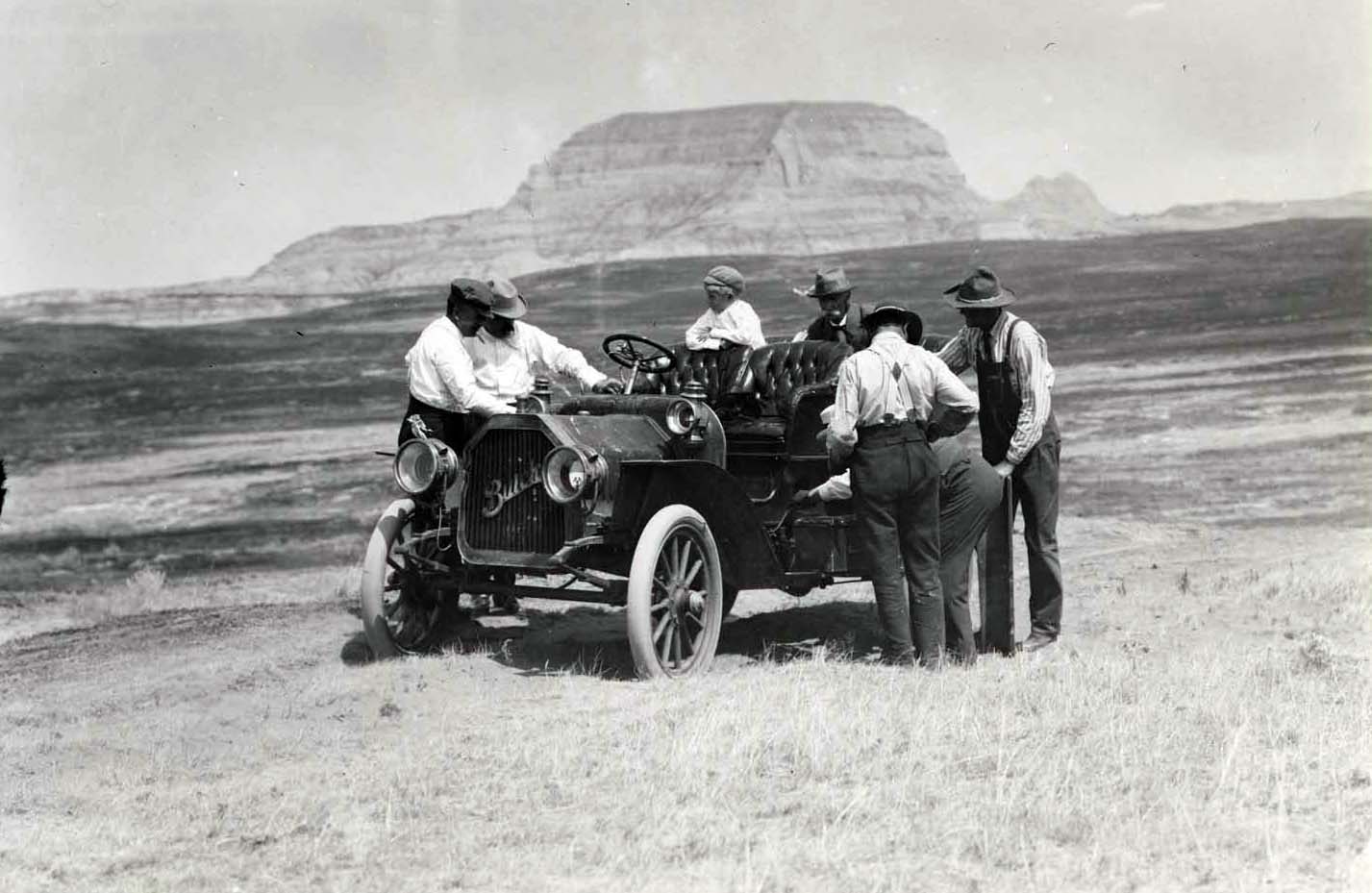People have moved about from city to city, from home to field, in peacetime and wartime since humankind began to walk upright. Foot travel was convenient and cheap, but humans could carry only a limited amount of stuff on their backs while traveling. (See Image 1.) It was a great improvement when wheels began rolling along about 5500 years ago. Once axles were invented, wheels were attached to carts that could take the load from the backs of people. Hitching horses or oxen to the carts brought about another great improvement in transportation. However, from that time transportation technology remained largely unchanged until the late 19th century.

Shortly before 1800, inventors tried to attach steam and electrical engines to small carts. Their goals were greater speed and the elimination of livestock. Horses could haul great loads, but they were fairly slow and needed shelter and feed. Barns and hay were expensive to purchase in urban settings. Motorized vehicles were a good idea, but it was not until the late 19th century that power and cart became happily hitched. French entrepreneurs began producing automobiles for sale in 1890. By early 1900, American manufacturers produced cars to meet the growing demand. At first, manufacturing meant hand-crafted engines and bodies. Soon, however, American auto manufacturers applied assembly-line methods to put autos together quickly and economically.

For many years, automobile designers and builders tried to find the best power system for automobiles. Electrical batteries were effective for powering a speedy auto, but batteries had a short lifespan. Steam was powerful, too, but expensive and somewhat dangerous because the boilers sometimes exploded. In the United States, R.E. Olds and Henry Ford built popular cars with internal combustion engines powered by gasoline. (See Image 2.) By 1920, internal combustion engines had become the standard for automobiles. The first company to successfully manufacture cars for the mass market was Oldsmobile. In 1901, Oldsmobile sold 425 cars with a three horse-power engine. By 1908, 241 other companies were producing automobiles. However, of these companies, the toughest competitor was the Ford Motor Company incorporated by Henry Ford in 1903. By 1910, about 2,000 companies had entered the motorcar manufacturing business. Many were small operations employing one or two people that sold cars locally. By 1920, competition had reduced that number to about 100 companies. The efficiencies of mass manufacturing eliminated most of the competition. Henry FordHenry Ford was born on a Michigan farm in 1863. As a boy, he experimented with steam and developed an interest in steam engines. He disassembled watches to learn mechanics. He began working at a railroad car company when he was 16. When Ford was 28, he went to work at the Detroit electrical power plant. He taught himself electrical engineering and became chief engineer of the plant. In 1896, Ford began to experiment with self-propelled vehicles. He started a company to produce automobiles, but the company failed. His second company also failed, but in 1903, he incorporated the Ford Motor Company. He experimented with cars until he developed the Model T. Ford priced the car at $400, and the Model T became the best-selling car in America. He also raised his employees’ wages to $5 per day which made it possible for them to buy the cars they made. He had succeeded in achieving his dream of a 'motorcar for the great multitude.' came up with the idea to manufacture automobiles in an assembly-line system. As a result, Ford sold his cars at a price most families could afford. Automobiles were instantly popular. Everyone could see the advantage of motorized transportation. By 1920, North Dakotans owned a total of 83,000 automobiles. (See Document 1) Nearly 55,000 of those automobiles belonged to farmers. Of course, it was necessary to improve roads and provide services for cars that needed a regular supply of gasoline or diesel. Trains remained the best way to travel long distances for several more decades. However, by 1903, cars had become a common sight all over the United States, even in rural North Dakota. (See Image 3.)
Document 1: First Car
“[Capt. Will Richard, the handy-man] had a 1912 Buick and this was 1912. This was a twin cylinder Buick. It was on the wrong side of the road and there was a [gear] lever on the side. . . . In the center was neutral and you pushed it down part way and you was in low and then on down you was in high and if you pulled it clear back, you was in reverse. And the gasoline tank was under the hood and the engine was under the seat and that was the first car that I learnt to drive. “. . . [Richard] was ahead of his time. He had a nice cabin built on it – made out of [wainscoating] and . . . a nice roof and canvass curtains. He could roll’ em up and it said on the side of it ‘The Gospel Car.’ ”And old Mrs. Lamb . . . She was always on the phone talkin' to Mrs. Brooks, . . . and, of course, mother would be [listening in and heard], ‘That speed demon, John, just went by our place in a cloud of dust and if he was makin' a mile, he was at least goin' 15 mile an hour!’ ”Well, then ma would give me the devil when I got back for speed and said . . . not to let me drive it anymore. . . . ‘Speeding? Well, where did you hear that?’ ‘Well, Mrs. Lamb said you went by there and you were just acuttin' her!’ Well, Donalds went by me . . . with a team and got to Cogswell before I did!’” Available in full text at http://history.nd.gov/archives/manuscripts/inventory/10157counties/1015…



